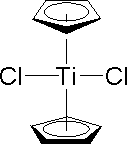Wednesday, January 7th, 2009
On January 6, 2009, ASM International and SAFC Hitech (a business segment within SAFC, a member of the Sigma-Aldrich Group) announced that they have entered into a certified manufacturer and partnership agreement for ALD precursors for barium- and strontium-based high-k insulators. The agreement includes certification criteria, a license to certain ASM ALD patents, and a partnership for marketing and further R&D.
Finnish researchers Vehkamaki et al. showed the use of cyclopentadienyl precursors for the “Growth of SrTiO3 and BaTiO3 Thin Films by Atomic Layer Deposition,” in Electrochemical and Solid-State Letters, 2(10):504-506 (1999). So the basic idea has been around for a decade, waiting for the real need that is now here with 32nm node memory production.
I did early R&D work on BaSrTiO3 MOCVD precursors in 1995 (knowing we were far ahead of the curve), and one of the inherent problems was the control of stoichiometry in final films, due to competition by MO precursors for the oxygen in the deposition chamber. ALD processes may avoid this problem if the Ba and Sr are in separate layers. Otherwise, the SAFC Hitech folks will have to engineer one large molecule to carry both the Ba and Sr in proper proportions (http://www.mrs.org/s_mrs/sec_subscribe.asp?CID=2618&DID=116023&action=detail).
“SAFC Hitech has been working closely with ASM’s research groups for some time, focusing on evaluation and process development of this class of cyclopentadienyl source materials,” commented Dr. Peter Heys, Research and Development Director, SAFC Hitech. I’ve toured their facility in Sheboygan, WI (http://www.pennwellblogs.com/sst/eds_threads/2008/04/080429-safc-hitech-opens-modular.php) so I know that they’re up to the challenge one way or the other. –E.K.
Tags: 32nm, ALD, CMOS, cyclopentadienyl, DRAM, high-k, HK, IC, MOCVD, precursor

